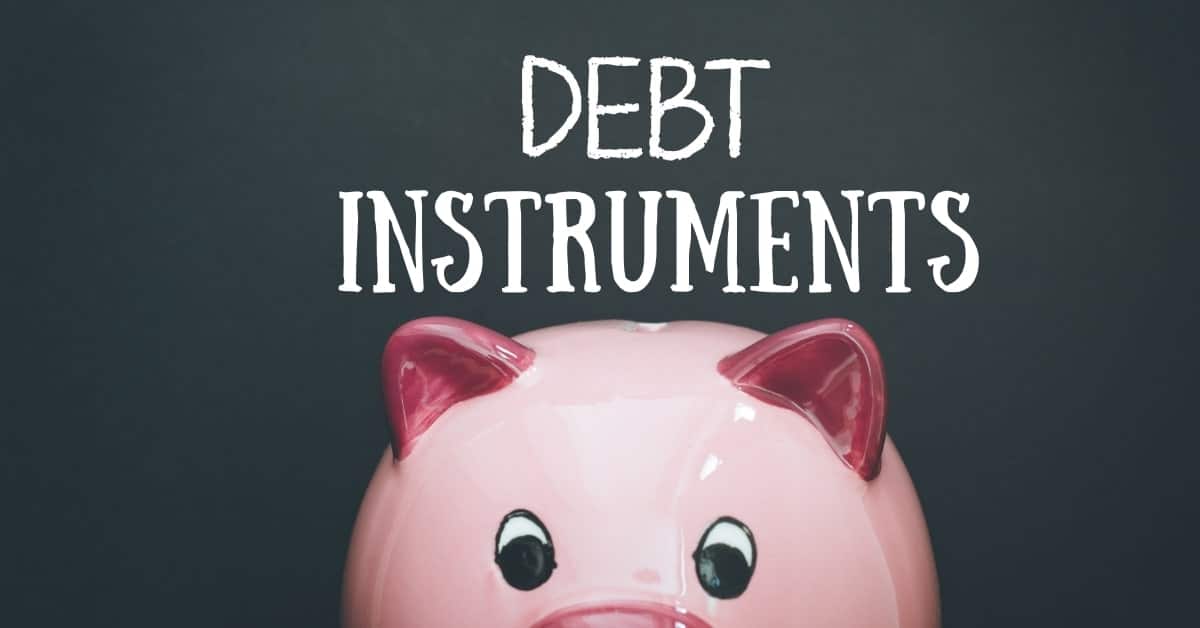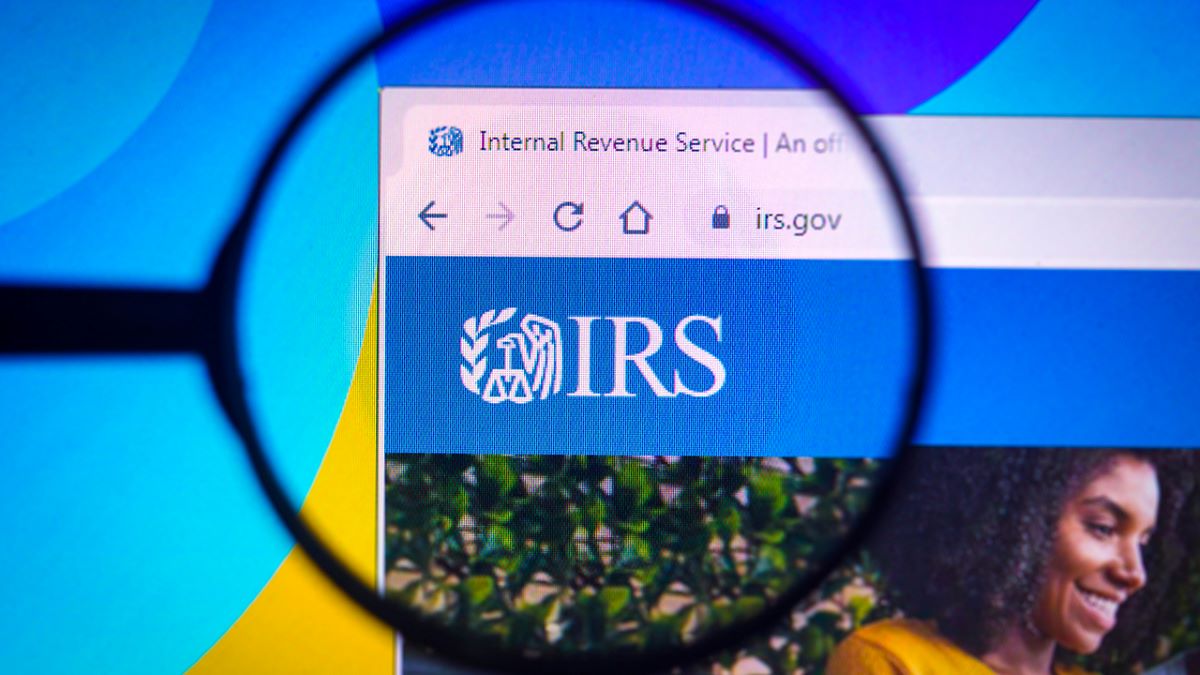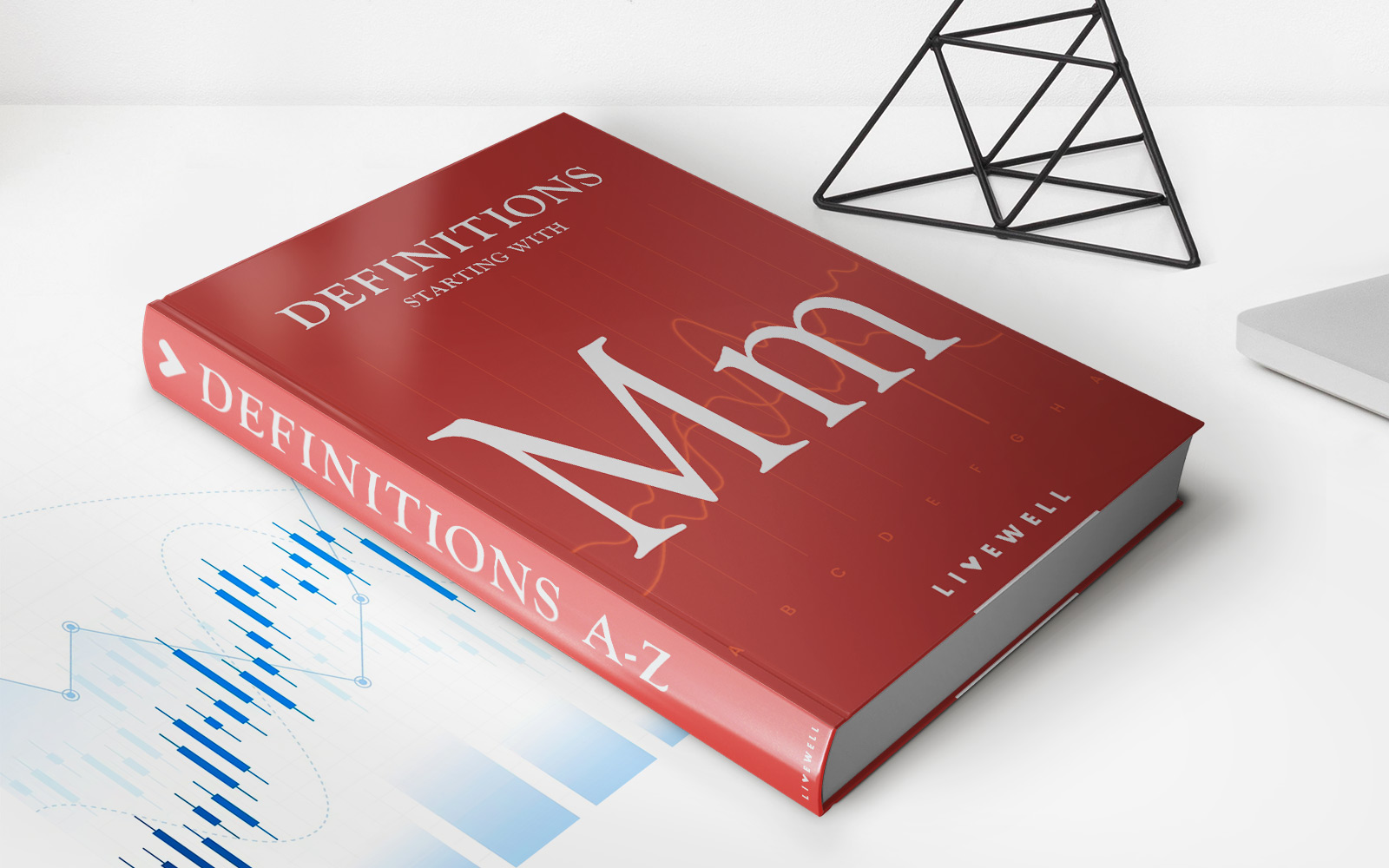

Finance
How To Settle Debt With The IRS
Published: October 31, 2023
Learn how to settle your debt with the IRS and regain control of your finances. Get expert advice and find the best strategies to overcome your financial challenges.
(Many of the links in this article redirect to a specific reviewed product. Your purchase of these products through affiliate links helps to generate commission for LiveWell, at no extra cost. Learn more)
Table of Contents
Introduction
Dealing with debt can be overwhelming, especially when it involves the Internal Revenue Service (IRS). If you find yourself in a situation where you owe money to the IRS, it’s crucial to understand your options and take steps to resolve the debt. Failing to address IRS debt can lead to serious consequences, including wage garnishment, tax liens, and even legal action.
In this article, we will provide you with a comprehensive guide on how to settle debt with the IRS. We’ll walk you through the process of understanding your IRS debt, evaluating your financial situation, exploring payment options, and discussing the importance of professional help. By gaining a better understanding of the available strategies, you can take the necessary steps to regain control of your financial situation and settle your IRS debt.
Keep in mind that every individual’s situation is unique, and what works for one person may not work for another. It’s important to consult with a tax professional or financial advisor to determine the best approach for your specific circumstances.
Now, let’s dive into the nitty-gritty of settling your debt with the IRS.
Understanding IRS Debt
Before you can start tackling your IRS debt, it’s crucial to understand what it is and how it accrues. IRS debt typically arises when you owe unpaid taxes, penalties, and interest to the Internal Revenue Service. This can happen for various reasons, such as failing to file your tax returns, underreporting your income, or taking questionable deductions.
When you don’t pay your taxes on time, the IRS will start the collection process to recover the debt. This can include sending notices, initiating wage garnishment, or placing a tax lien on your property. Additionally, the IRS adds penalties and interest to the outstanding balance, further increasing the amount you owe.
It’s important to note that the IRS has the power to take legal action to collect the debt if left unresolved. This can include seizing your assets, freezing your bank accounts, or filing a lawsuit against you. Therefore, it’s crucial to address your IRS debt as soon as possible to avoid these negative consequences.
IRS debt can be overwhelming, but it’s essential to stay calm and proactive. Understanding the nature of your debt and the potential consequences will help you navigate the process more effectively. Now that you have a basic understanding of IRS debt let’s move on to the next step: evaluating your financial situation.
Evaluating Your Financial Situation
Once you understand your IRS debt, the next step is to assess your overall financial situation. Evaluating your finances will help you determine how much you can afford to pay towards your IRS debt and which payment option is most suitable for your circumstances.
Start by gathering information about your income, expenses, and assets. Calculate your monthly income from all sources and list your necessary expenses, such as housing, transportation, utilities, and groceries. It’s also important to consider any outstanding debts, such as credit card bills or student loans. This evaluation will give you a clear picture of your financial standing and how much disposable income you have each month.
Additionally, assess your assets, such as property, vehicles, savings accounts, and investments. While these assets may not directly impact your ability to pay off your IRS debt, they may come into play when exploring certain payment options.
Once you have a comprehensive understanding of your financial situation, you can determine the amount you can reasonably pay towards your IRS debt. This will help you decide which payment option is most suitable for you. It’s important to note that the IRS generally expects taxpayers to make a good-faith effort to pay their tax debt to the best of their abilities.
If you find that your income is insufficient to cover your basic living expenses and make payments towards your IRS debt, you may qualify for certain hardship programs or payment deferral options. Consulting with a tax professional will provide you with a more accurate assessment and insights into the best approach for your specific situation.
Now that you have evaluated your financial situation, let’s explore the various payment options that the IRS offers to settle your debt.
Exploring IRS Payment Options
When it comes to settling your IRS debt, there are several payment options available to taxpayers. Each option has its own requirements and considerations, so it’s important to evaluate them carefully and choose the one that best fits your financial situation. Here are a few of the most common IRS payment options:
- Offer in Compromise: This option allows taxpayers to settle their tax debt for less than the full amount owed. To qualify for an Offer in Compromise, you must demonstrate that paying the full amount would cause financial hardship or that there is doubt as to whether you actually owe the debt. This option is typically reserved for those who have exhausted all other possibilities for payment.
- Installment Agreement: An installment agreement allows you to pay off your IRS debt in monthly installments. The amount you pay each month is based on factors such as your income, expenses, and the total amount owed. It’s important to note that interest and penalties will continue to accumulate until the debt is fully paid off.
- Partial Payment Installment Agreement: Similar to an installment agreement, a partial payment installment agreement allows you to make monthly payments towards your IRS debt. However, the monthly payments are based on what you can afford to pay, taking into consideration your financial situation. This option may be suitable if you don’t qualify for an Offer in Compromise but are unable to pay the full amount.
- Currently Not Collectible: If you are experiencing significant financial hardship and are unable to pay your IRS debt, you may qualify for currently not collectible (CNC) status. This means that the IRS temporarily suspends collection activities, giving you time to improve your financial situation. However, keep in mind that interest and penalties will continue to accrue during this time.
These are just a few of the payment options available to settle your IRS debt. Each option has its own eligibility requirements and implications, so it’s important to carefully consider your options and consult with a tax professional to determine the best course of action for your situation.
Next, we’ll discuss the potential impact of penalties and interest on your IRS debt.
Offer in Compromise
One potential option for settling your IRS debt is through an Offer in Compromise (OIC). This program allows taxpayers to negotiate with the IRS to settle their tax debt for less than the full amount owed. It can be a viable option for individuals who are unable to pay their tax debt in full and meet specific eligibility criteria.
To qualify for an Offer in Compromise, you must demonstrate to the IRS that paying the full tax debt would create significant financial hardship or that there is doubt as to whether you actually owe the debt. The IRS will consider factors such as your income, expenses, assets, and future earning potential when reviewing your offer.
Submitting an Offer in Compromise requires careful preparation and documentation. You will need to provide detailed financial information, including your income, living expenses, assets, and liabilities. It’s essential to accurately report your financial situation to support your offer.
If your offer is accepted, you will be required to make a lump sum payment or periodic payments within a specified time frame. The IRS will also typically include specific conditions and requirements that you must meet during and after the OIC process. It’s crucial to adhere to these terms to avoid any additional penalties or consequences.
Keep in mind that the Offer in Compromise program is not a guaranteed solution, and the IRS will carefully review your offer before making a decision. It’s advisable to seek professional assistance from a qualified tax professional or enrolled agent who has experience in dealing with Offers in Compromise. They can guide you through the process, help you navigate the paperwork, and improve your chances of a successful outcome.
It’s important to note that the Offer in Compromise program is not suitable for everyone. If you have the ability to pay your tax debt in full or through an installment agreement, the IRS will not generally accept an Offer in Compromise. Additionally, if you have unresolved tax returns or have declared bankruptcy, you will not be eligible for the program.
Before pursuing an Offer in Compromise, it’s essential to evaluate your financial situation, consult with a tax professional, and consider other payment options that may be more suitable for your circumstances.
Now that you have a better understanding of the Offer in Compromise option, we can explore other payment options offered by the IRS.
Installment Agreement
If you’re unable to pay your IRS debt in full, an Installment Agreement can be a viable option for resolving your tax obligations. This payment arrangement allows you to pay off your debt in monthly installments over an extended period of time.
With an Installment Agreement, you agree to make regular monthly payments towards your tax debt until it is fully paid off. The amount you pay each month is determined based on factors such as your income, expenses, and the total amount owed. The IRS will review your financial situation to determine the minimum monthly payment you can afford.
The benefit of an Installment Agreement is that it allows you to break down your tax debt into manageable payments, giving you the flexibility to fulfill your financial obligations over time. However, it’s important to note that interest and penalties will continue to accrue until your debt is fully paid off.
There are different types of Installment Agreements you can consider:
- Short-Term Installment Agreement: This type of agreement allows you to pay off your tax debt within 120 days. It is a good option if you expect to have the funds to pay off your debt relatively quickly.
- Long-Term Installment Agreement: If you need more time to pay off your tax debt, a long-term installment agreement may be a suitable option. These agreements can be set up for a duration of up to 72 months.
- Streamlined Installment Agreement: The streamlined installment agreement is available for taxpayers who owe less than $50,000 in combined tax, penalties, and interest. It allows you to set up a payment plan without providing financial statements or IRS requests for additional information.
To initiate an Installment Agreement, you can apply online using the IRS Online Payment Agreement tool or by completing Form 9465, Installment Agreement Request, and mailing it to the IRS. It’s important to accurately complete the form and provide all required information to avoid any delays or complications.
If your financial situation changes after setting up an Installment Agreement, you should notify the IRS immediately. Adjustments to your payment schedule may be possible if you experience financial hardship or significant changes in income or expenses.
Before setting up an Installment Agreement, it’s essential to carefully evaluate your financial situation and consider factors such as the length of the payment term and the total amount of interest and penalties that may accrue. Consulting with a tax professional can help you navigate this process and determine the most suitable approach for your circumstances.
Now that you understand how an Installment Agreement works, let’s explore another payment option: the Partial Payment Installment Agreement.
Partial Payment Installment Agreement
If you’re unable to pay your IRS debt in full and don’t qualify for an Offer in Compromise, a Partial Payment Installment Agreement (PPIA) may be a viable option. This payment arrangement allows you to make monthly payments towards your tax debt based on what you can afford, rather than the full amount owed.
With a Partial Payment Installment Agreement, you’ll work with the IRS to determine a monthly payment amount that is reasonable and affordable based on your financial situation. Unlike a regular Installment Agreement, where you pay off the full debt, a PPIA allows you to settle your tax debt by paying a partial amount over an extended period of time.
To be eligible for a Partial Payment Installment Agreement, you’ll need to provide detailed financial information to the IRS, including your income, expenses, assets, and liabilities. The IRS will review your financial situation and may consider factors such as your income level, debt-to-income ratio, and other obligations you have.
It’s important to note that a Partial Payment Installment Agreement does not forgive your tax debt entirely. Instead, it allows you to pay off a portion of what you owe over time. The remaining balance may be subject to the IRS collection efforts, including potential tax liens on your property.
Similar to other payment options, interest and penalties continue to accrue on the remaining balance until it is fully paid off. It’s also worth mentioning that the IRS may periodically review your financial situation to ensure that the agreed-upon payment amount remains appropriate.
Applying for a Partial Payment Installment Agreement requires careful documentation and accurate financial reporting. It’s advisable to consult with a tax professional who can guide you through the process, help you negotiate with the IRS, and ensure that you are presenting your financial situation in the best possible light.
It’s important to consider the implications of entering into a Partial Payment Installment Agreement. While it allows you to make lower monthly payments, it may extend the duration of your debt repayment and result in a larger overall payment due to the accrual of interest and penalties.
Before pursuing a PPIA, carefully evaluate your financial capabilities and consider other payment options that may be more suitable for your circumstances. An experienced tax professional can assess your situation and help you determine the best course of action.
Now that you understand the Partial Payment Installment Agreement, let’s discuss another option: Currently Not Collectible status.
Currently Not Collectible
If you are experiencing significant financial hardship and are unable to pay your IRS debt, you may qualify for Currently Not Collectible (CNC) status. This status temporarily suspends the collection efforts by the IRS until your financial situation improves.
To be eligible for Currently Not Collectible status, you must demonstrate to the IRS that paying your tax debt would cause substantial financial hardship. This could be due to unemployment, disability, or other severe circumstances that limit your ability to meet your basic living expenses.
To request CNC status, you’ll need to provide detailed financial information to the IRS, including your income, expenses, assets, and liabilities. The IRS will review your financial situation to determine whether you qualify for Currently Not Collectible status. If approved, the IRS will temporarily halt collection activities, which includes freezing any wage garnishment or bank levies.
It’s important to note that being classified as Currently Not Collectible does not eliminate your tax debt. It simply puts a pause on collection actions while you work to improve your financial situation. The IRS may periodically reassess your financial status to determine if you are still unable to pay.
While in Currently Not Collectible status, it’s important to continue filing your tax returns on time. Failure to file your future tax returns can result in the termination of your Currently Not Collectible status, leading to resumed collection efforts by the IRS.
It’s worth mentioning that interest and penalties continue to accrue while you are in Currently Not Collectible status. Although the IRS may not actively collect during this time, the debt itself does not go away. It’s essential to address your tax debt and explore other payment options once your financial situation improves.
Applying for Currently Not Collectible status can involve complex negotiations and documentation. It’s highly recommended to seek guidance from a tax professional or enrolled agent who can assist you with the application process and help you navigate the requirements.
Remember, Currently Not Collectible status is a temporary solution, and it’s crucial to work on resolving your tax debt in the long run. Once your financial situation improves, consider exploring other payment options or negotiating with the IRS to find a suitable resolution.
Now that you have an understanding of Currently Not Collectible status, let’s discuss the potential impact of penalties and interest on your IRS debt.
Penalties and Interest
When it comes to IRS debt, it’s important to understand that penalties and interest can significantly impact the total amount you owe. The IRS imposes penalties and interest as a way to encourage timely payment of taxes and to compensate for the delayed payment.
Let’s take a closer look at the two main components: penalties and interest:
- Penalties: The IRS imposes various penalties for different reasons. The most common penalties include the Failure to File penalty, which is charged if you don’t submit your tax return by the deadline, and the Failure to Pay penalty, which is imposed if you don’t pay your tax liability by the due date. The penalty rates can vary depending on the specific circumstances, but they can significantly increase your overall tax debt.
- Interest: In addition to penalties, the IRS also charges interest on the unpaid balance. The interest rate is determined quarterly and is based on the federal short-term rate plus an additional percentage. This interest accrues daily, compounding your debt over time. As a result, the longer you take to pay off your IRS debt, the more interest you will accumulate.
It’s important to note that penalties and interest continue to accrue until your IRS debt is paid in full. This means that even if you enter into a payment agreement or negotiate a settlement, you will still be responsible for paying the accumulated penalties and interest.
To minimize the impact of penalties and interest, it’s crucial to address your IRS debt as soon as possible. The sooner you take action, the lower the amount of penalties and interest that will accrue over time. It’s also essential to file your tax returns on time, even if you’re unable to make the full payment.
If you’re struggling with IRS debt and can’t afford to pay the full amount, it’s worth exploring payment options such as Installment Agreements or Offers in Compromise. These options can help you manage your debt and potentially reduce the overall amount owed, which can also lower the associated penalties and interest.
However, it’s important to remember that penalties and interest are non-negotiable and cannot be waived by the IRS. Therefore, addressing your tax debt promptly and working on a resolution strategy is vital to minimize the impact of penalties and interest on your financial situation.
Now that we’ve covered penalties and interest, let’s discuss the importance of seeking professional help when dealing with IRS debt.
Hiring Professional Help
Dealing with IRS debt can be complex and overwhelming, which is why it’s often beneficial to seek professional help when navigating the process. Hiring a tax professional or enrolled agent who specializes in IRS debt matters can provide you with the expertise and guidance needed to effectively resolve your tax obligations.
Here are some reasons why hiring professional help can be advantageous:
- Expertise and Knowledge: Tax professionals have in-depth knowledge of tax laws, IRS procedures, and the various options available to resolve your IRS debt. They can assess your situation, identify the most suitable payment option, and guide you through the necessary steps.
- Negotiation Skills: IRS agents are experienced negotiators, and having your own representative who understands IRS procedures can level the playing field. A tax professional can advocate on your behalf, present your case effectively, and negotiate the best possible outcome.
- Accurate Financial Evaluation: Properly evaluating your financial situation is crucial when determining payment options or negotiating with the IRS. Tax professionals can ensure that your financial information is accurately reported, increasing your chances of getting approved for favorable payment arrangements.
- Procedural Compliance: IRS procedures and requirements can be complex, and it’s important to adhere to them to avoid complications or rejections. A tax professional can help you navigate the paperwork, meet deadlines, and ensure that all necessary documentation is properly submitted.
- Emotional Support and Peace of Mind: Dealing with IRS debt can be stressful and emotionally challenging. Having a professional on your side can provide the reassurance and support you need during the process, giving you peace of mind that your case is being handled by an expert.
While hiring a tax professional may come with a cost, the potential benefits can far outweigh the expenses. A professional can save you time, help you explore options you may not have been aware of, and potentially reduce the overall amount you owe to the IRS.
When selecting a tax professional, consider their experience, qualifications, and track record of success in handling IRS debt cases. It’s advisable to consult with multiple professionals and choose the one that you feel most comfortable working with and who understands your unique financial situation.
Remember, even with professional help, you still play a crucial role in the resolution process. Be proactive, provide all necessary documentation, and stay involved in the communication and decision-making process.
Now that you understand the importance of seeking professional help, let’s wrap up our discussion.
Conclusion
Dealing with IRS debt can be a challenging and overwhelming experience. However, by understanding your options and taking proactive steps, you can regain control of your financial situation and settle your tax obligations.
In this comprehensive guide, we covered the process of settling debt with the IRS. We discussed the importance of understanding your IRS debt and evaluating your financial situation to determine the best approach for repayment. We explored various payment options, including Offers in Compromise, Installment Agreements, Partial Payment Installment Agreements, and Currently Not Collectible status. We also highlighted the impact of penalties and interest on your tax debt and the benefits of seeking professional help.
Remember, every individual’s situation is unique, and what works for one person may not be the best solution for another. It’s important to seek professional advice and carefully evaluate the payment options that align with your financial capabilities and long-term goals.
Resolving IRS debt requires patience, diligence, and proactive communication. Make sure to keep accurate records, file your tax returns on time, and promptly address any correspondence from the IRS. By taking these steps, you can work towards achieving financial stability and peace of mind.
Finally, consider the importance of staying proactive in maintaining your financial health. Take steps to stay compliant with your tax obligations moving forward, such as properly filing your tax returns and paying any taxes owed. Consulting with a tax professional or financial advisor can help you develop a plan to prevent future tax debt and maintain your financial well-being.
Remember, you are not alone in this process. Seek the necessary help, take action, and tackle your IRS debt with confidence. With careful planning and persistence, you can overcome this challenge and achieve a fresh start towards financial freedom.














